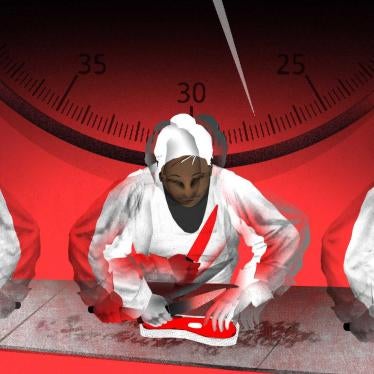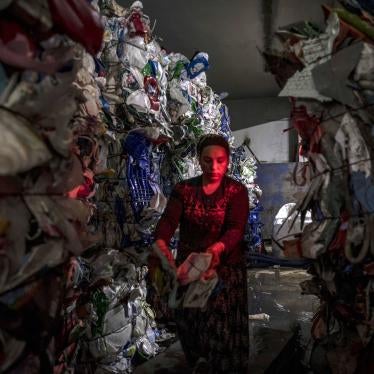(Washington, DC) – A Trump administration final regulation announced on September 17, 2019 to allow increased slaughter line speeds in hog processing plants in the United States threatens to put workers in grave danger of serious injuries, Human Rights Watch said today.
The “Modernization of Swine Slaughter Inspection” rule promulgated by the Food Safety and Inspection Service (FSIS) of the US Department of Agriculture (USDA) revokes maximum slaughter line speeds for pork producers and could open the door to plants operating as fast they want. Earlier this month, Human Rights Watch released a report, “‘When We’re Dead and Buried, Our Bones Will Keep Hurting’: Workers’ Rights Under Threat in US Meat and Poultry Plants,” which describes line speed as a major factor contributing to high rates of serious injury among workers in meat and poultry processing plants.
“Nearly all the workers we interviewed described how intense pressure to keep up with the pace of production has led them to suffer debilitating pain and injury,” said Komala Ramachandra, senior researcher in the Business and Human Rights division at Human Rights Watch. “Removing limits on line speed for pig slaughter will make already dangerous work conditions even more hazardous.”
Workers in the meat and poultry slaughtering and processing industry suffer some of the highest rates of occupational injury and illness in the country. Between 2015 and 2018, a worker in the industry lost a body part or was sent to the hospital for in-patient treatment about every other day, according to severe injury data published by Occupational Safety and Health Administration at the US Department of Labor (OSHA). Each year between 2013 and 2017, eight workers in the industry died, on average, because of an incident at their plant.
USDA is charged with ensuring animals are slaughtered and processed in a manner commensurate with food safety. USDA inspectors have the power to reduce slaughter line speeds if they believe line speeds are too fast for them to adequately inspect the animals. Under the new rule, however, some of the responsibility for meat inspection is transferred to the company employees to do some of the work previously conducted by federal inspectors, and the rule reduces the number of USDA inspectors in a facility.
Human Rights Watch is concerned that the new inspection system has weakened USDA inspectors’ ability to slow down line speeds in hog processing plants that were involved in the pilot program allowing for privatized inspection, as well as in poultry processing plants that have adopted similar systems under an earlier new rule.
While FSIS claims that the system put in place by the new rule improves food safety and the effectiveness of hog slaughter inspection systems by removing unnecessary regulatory obstacles to innovation and making better use of the agency’s resources, it also removes one of the only safeguards on line speeds.
In proposing the rule, FSIS concluded that a privatized inspection system led to lower average, annual rates of worker injury in the plants participating in the pilot program. In June 2019, the USDA’s inspector general opened an investigation into whether this analysis was based on flawed data. That investigation remains open.
“These industries need more oversight and transparency, not less,” said Ramachandra. “This rule represents an abdication of the administration’s responsibility for protecting American workers’ health and safety.”










